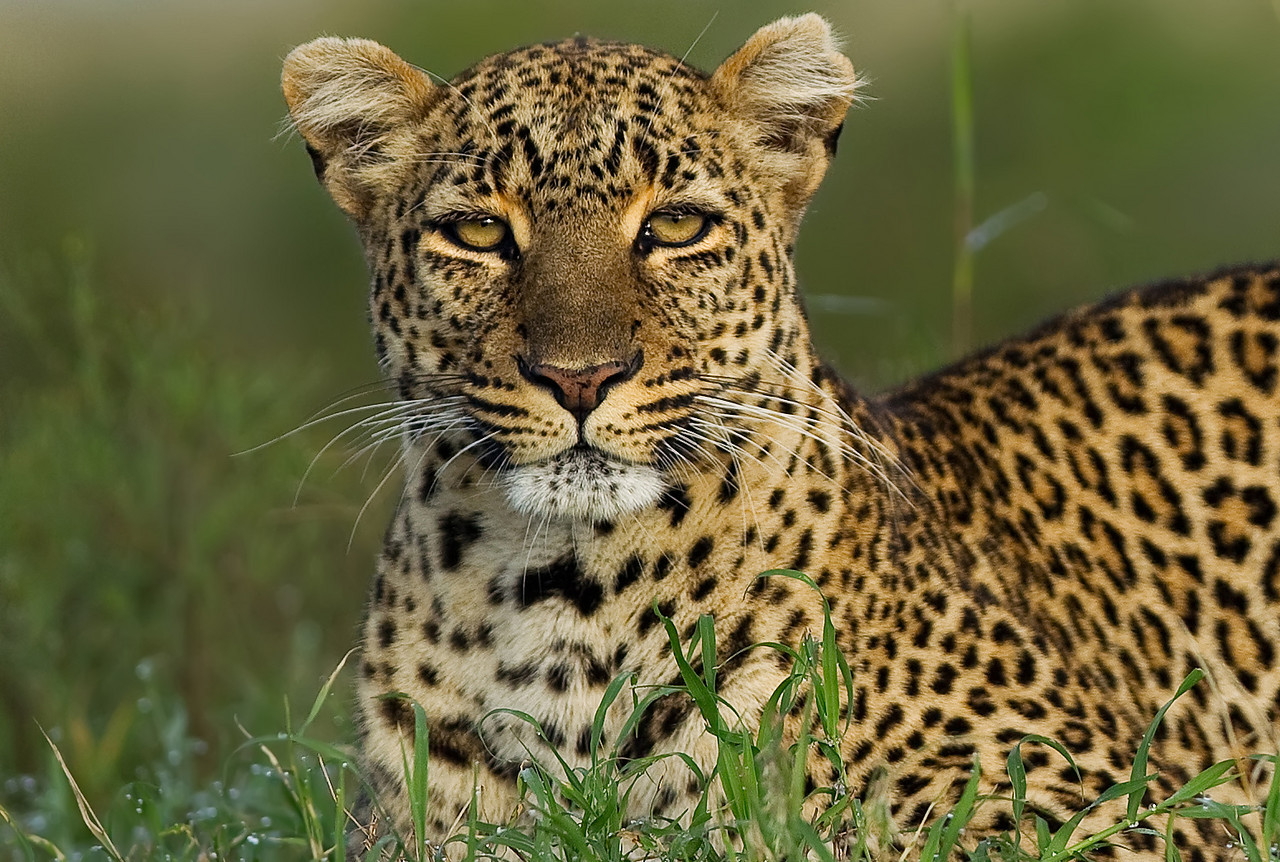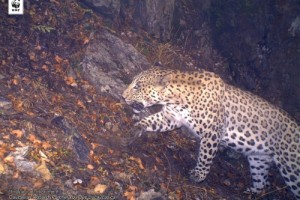Leopard: Red Data Book of Armenia

Cats - Felidae
Status. In the IUCN Red List of Threatened Species (ver. 3.1), the species is categorized as Near Threatened NT and the subspecies as Endangered EN C2a(i). According to IUCN criteria categorized as Critically Endangered CR C2a(i); D.
Distribution. The range of the subspecies encompasses the Caucasus, Eastern Turkey, Southern Turkmenistan, Iran and Afghanistan.
Distribution in Armenia. Inhabits Southwestern and Southern Armenia from the central and eastern parts of Khosrov Forest Reserve southwards to the Armenian–Iranian state border, covering the Geghama, Zangezur, Vayots Dzor, Bargushat and Meghri ridges.
Habitats. Arid mountain grasslands, arid sparse forests, mountain grasslands, subalpine and alpine meadows on the southern slopes.
Biological traits. As snow cover is an important limiting factor, meadows are used only in the snowless season. Presence of hardly accessible rocky massifs is also a vital requirement, since they allow to hunt on the staple prey, bezoar goats, from ambush and contain numerous shelters. Leopards also prey upon the wild boar, roe deer, Indian crested porcupine and European hare. Caves, crevices and dense scrubs are used by leopards as shelters.
Population size and its trends. The maximum possible number of leopards in Armenia is 10–15 individuals. The extent of occurrence is 7497.2 km2. The area of occupancy is 2856.8 km2, comprising the areas of constant presence and the corridors between them. Only two areas (central and eastern Khosrov Forest Reserve, 207.9 km2 and the area to the north of the Nrnadzor village, 296.9 km2) hold constantly living leopards. This pattern of the population makes it entirely dependent upon the functioning of the corridors.
Major threats. The most imminent threat to leopard survival is range fragmentation caused by poaching and other human activities.
Conservation measures. Protected in Khosrov Forest Reserve, Shikahogh Reserve, Arevik National Park and Zangezur Sanctuary. Beginning from 2002, Armenian branch of World Wide Fund for Nature (WWF) assists to leopard conservation throughout its range and implements the species monitoring. It is essential to set measures directed towards the minimization of range fragmentation. Particularly, it is important to encompass the prey–rich habitats into the network of large and small protected areas. It is also important to set stringent control over poaching, mining, road construction, grazing and other human activities.
Suggestions
 The Ministry of Environment sent a letter international partners to draw their attention to the real danger of environmental disasters as a result of Azerbaijan's large-scale aggression towards the territory of Armenia
The Ministry of Environment sent a letter international partners to draw their attention to the real danger of environmental disasters as a result of Azerbaijan's large-scale aggression towards the territory of Armenia
 WWF-Armenia launches Leopard Caretakers Network Project
WWF-Armenia launches Leopard Caretakers Network Project
 Vicia pisiformis: Red Data Book of Armenia
Vicia pisiformis: Red Data Book of Armenia
 Vavilovia formosa: Red Data Book of Armenia
Vavilovia formosa: Red Data Book of Armenia
 Trigonella capitata: Red Data Book of Armenia
Trigonella capitata: Red Data Book of Armenia












